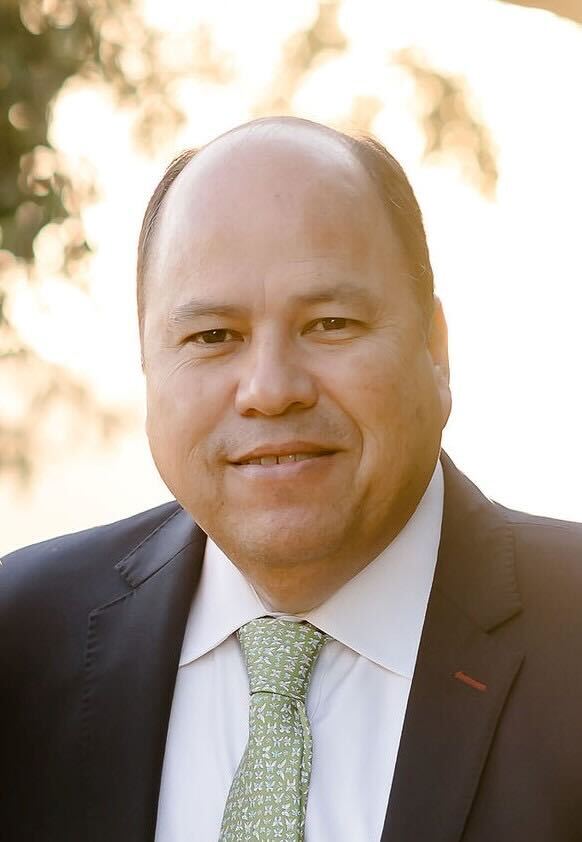There’s no question that a digital-first way of doing business is becoming the norm and the demand for digital in the mortgage industry is only growing. HousingWire recently spoke with Armando Falcon, CEO of Falcon Capital Advisors, about the continued growth of digital mortgage solutions such as eClosings and what lenders can do to implement eMortgages into their business models.
HousingWire: Is this the year that digital mortgages and eClosings really accelerate? Or was the recent interest more of a COVID-19 workaround?

Armando Falcon: There’s no question that digital mortgages and eClosings certainly got a lot of attention during COVID-19, but they are not a “fix” or a “fad”—they’re the future. The momentum was there pre-COVID and, if anything, it is accelerating as COVID recedes.
Lenders realize the value of giving their customers the same kind of convenient digital experience that they receive in other aspects of their lives (e.g., banking, shopping, transportation). They also realize that if they don’t provide this experience, larger national retail lenders will. This is why I believe these initiatives will continue even in the smaller, more competitive environment that the industry is now facing.
In addition to customer acquisition and retention, the creation of digital assets provides greater capital market efficiencies and reduces costs and errors. Recently there have been a handful of ROI studies that have shown that eClosings and eNotes can save originators approximately $400 per loan and settlement service providers about $100 per loan.
The investment side is ready for the securitization of digital assets. Fannie Mae and Freddie Mac have been buying eNotes for years, and now Ginnie Mae has just reopened its Digital Collateral Program. We have been working closely with Ginnie Mae on this program and are very excited that as of June 20 the program began accepting new applications from eIssuers, eCustodians, and subservicers, opening up the government market to eNotes.
In addition to the momentum and the economics, digital lending just makes sense. Why would our industry keep churning out paper, when the rest of the financial world is rapidly doing as much as possible digitally?
HW: What are the biggest obstacles that lenders face in a true digital transformation?
AF: In my opinion, the obstacles are changing. Three years ago, the mortgage industry wasn’t entirely ready for digitalization. Title and settlement companies were hesitant to embrace eClosings, most states did not permit RON and, even where RON was available, most lenders were not yet comfortable with it. As for investors, the GSEs were pretty much the only ones accepting eNotes. There was not yet a program for securitizing government loans. But this is all changing.
Today, the vast majority of title and settlement companies are ready and willing to support hybrid and, in many cases, full eClosings. There are 39 states that have passed RON laws. The landscape of investors accepting eClosed loans and eMortgages has grown exponentially. And as I mentioned, Ginnie Mae is expanding its Digital Collateral Program.
Companies that are moving forward with digital transformation tend to have strong executive backing of their programs and other advocates in their organization who see the immediate benefits in terms of customer experience, operations, and capital markets efficiency. They are willing to drive change across their operations and work with advisors, like Falcon, to develop a roadmap to integrate digitalization into policies, processes, and training.
A notable challenge for the industry at the moment is the decline in overall market volume and reemphasis on purchase transactions. For the past two years, lenders were so busy booking refinance business that they were reluctant to spare resources for digital transformation initiatives.
Now, lenders that have not yet implemented eClosings will need to seriously consider how the cost savings and operational benefits from digital mortgages offset the economic pressure experienced in a down market. For lenders that have implemented eClosings, they may need to build out new workflows and procedures for their purchase channel to meet the shifting market.
Purchase transactions involve more moving parts, and the lender has less control over certain aspects, such as where settlement occurs. Still, with purchases just as with refinances it’s the lender who drives eSignature of its documents, chief among them being the promissory note.
Digitalizing even just this piece of the closing package creates process efficiencies, reduces costs, and shortens the time spent at closing. With more purchase transactions occurring, we expect there could also be an increase in the use of IPEN (In-Person Electronic Notarization) to notarize the security instrument if the borrower prefers to have an in-person ceremony.
HW: In terms of implementation, how long should an end-to-end transformation project take?
AF: The scope of these projects can vary considerably from one lender to another. Factors that may impact the complexity and time of implementation include: Are they a multi-channel lender? What resources have they committed to their implementation project? Where does the project fit within their list of priorities? How advanced are their counterparties and partners?
Also, what are their goals? Providing a customer experience to rival the mega lenders? Taking time and cost out of closings? Being able to move assets more quickly into the secondary market?
Some clients want to do all of these things and want them done yesterday. Others are content to take a more gradual approach.
The end goal is to be entirely digital, but not every lender needs to be fully digital on day one. There is incremental value in each step in the transformation process. Hybrid closings, for example, are more efficient in most cases than traditional closings and enhance the customer experience. They are often a good interim step prior to full eClosings.
As a rule of thumb, a relatively large lender can go from paper to hybrid closings in three to five months. A fully digital, enterprise-wide eClosing/eNote transformation probably takes between eight and 12 months. Some of the key activities for a lender to successfully implement an eMortgage program include:
- Standing up a dedicated Project Team augmented with eMortgage expertise
- Conducting an impact analysis across the organization
- Developing a roadmap and plan and
- Ensuring organizational buy-in at all levels through communications and training
In our experience, it is also important to train, train, train, and roll out quickly from the pilot so that your staff embraces digital as the new norm and not a “one-off.”
HW: What are you telling your clients who are on the fence about moving to eClosings and eMortgages?
AF: You cannot afford not to be digital. Your customers expect it, and if you don’t provide it, they will go to other lenders who are more advanced in this area and who aggressively promote a superior digital experience for consumers.
You cannot afford to be an inefficient, slow or high-cost lender. The market is already too competitive. eClosings can cut your origination costs by $400 or more per loan. How can you ignore this?
If your business model is to originate to sell or securitize, why wouldn’t you want to do it faster… get your capital and GOS sooner and pay less on warehouse lines?
Finally, if you are going to be in the mortgage business long term, you’re going to have to be digital sooner or later. Why not make it sooner to keep pace with your competitors?





